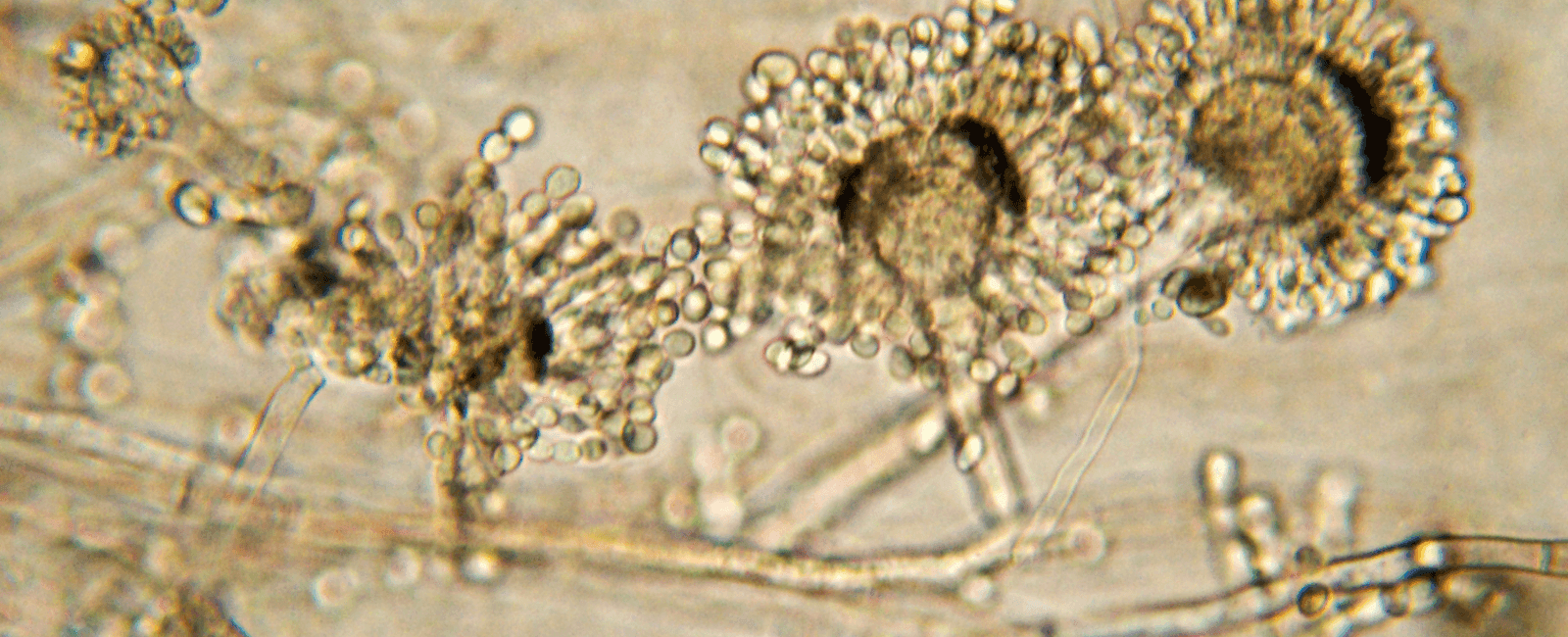

Researchers from the University of São Paulo and Maynooth University have discovered the key mechanisms behind the production of a toxin caused by the Aspergillus fumigatus fungus. This fungus, known for causing various diseases in humans, is considered one of the major health-threatening fungal pathogens by the World Health Organization (1).
The findings from the recent study provide the scientific community with a clearer understanding of how Aspergillus fumigatus and its toxins operate, opening up the possibility for future developments to prevent and treat diseases caused by it.
A threat to human health
Aspergillus fumigatus (A. fumigatus) is a relatively common mold species found in the air, soil, dust, and organic matter. Most people are exposed to its spores on a daily basis with no significant health implications. However, individuals with compromised immune systems or lung diseases are at risk of developing a severe and potentially fatal condition called aspergillosis.
The fungus is especially dangerous since it creates a potent mycotoxin known as gliotoxin, which evades the immune system, making it incredibly difficult to treat aspergillosis. As a result, an aggressive infection can form and spread throughout the body and quickly become life-threatening. Unfortunately, A. fumigatus is resistant to many common anti-fungal treatments, making infections even more challenging to manage. In 2019, it was placed on a watch list by the Centers for Disease Control and Prevention (CDC) because of its antimicrobial resistance and overall threat to human health.
With a continuous increase in fungal infection-related illnesses over the last half century, researchers have become increasingly concerned about preventing and managing these infections effectively (2). And since A. fumigatus spores are airborne and ever-present, the best means of circumventing these illnesses would be through a greater understanding of the fungus’s biology and pathogenic mechanisms.
Major findings and future implications
The primary goal of the study was to understand how A. fumigatus produces gliotoxins and protects itself from the toxic effects of these compounds. One of the main findings was the identification and characterization of the genes and enzymes responsible for creating gliotoxin. This new knowledge will help provide a greater foundation for developing strategies to stop the production of the toxin and potentially reduce the fungus’s virulence.
Furthermore, the research unveiled how A. fumigatus has evolved mechanisms to protect itself from the effects of gliotoxin through enzymes that neutralize the toxin within its cells, ensuring the survival of the fungus while still producing and storing such a toxic substance (3). This aspect of A. fumigatus’s biology opens up new possibilities for therapeutic targets, as the disruption of these self-protection mechanisms may help weaken the fungus and lead to new antifungal treatments.
“Our work not only unravels the complex interplay of molecular actors within Aspergillus fumigatus but also underscores the importance of understanding these mechanisms for potential therapeutic interventions against aspergillosis,” says Dr Özgür Bayram of Maynooth University. “The newfound knowledge might lay the foundation for a treatment targeting aspergillus infections in patients.”
References
- Parums, Dinah V. 2022. “Editorial: The World Health Organization (WHO) Fungal Priority Pathogens List in Response to Emerging Fungal Pathogens during the COVID-19 Pandemic.” Medical Science Monitor 28 (December). https://doi.org/10.12659/msm.939088.
- Bongomin, Felix, Sara Gago, Rita Oladele, and David Denning. 2017. “Global and Multi-National Prevalence of Fungal Diseases—Estimate Precision.” Journal of Fungi 3 (4): 57. https://doi.org/10.3390/jof3040057.
- Alves de Castro, Patrícia, Camila Figueiredo Pinzan, Thaila Fernanda dos Reis, Clara Valero, Norman Van Rhijn, Carla Menegatti, Ivan Lucas de Freitas Migliorini, et al. 2024. “Aspergillus Fumigatus Mitogen-Activated Protein Kinase MpkA Is Involved in Gliotoxin Production and Self-Protection.” Nature Communications 15 (1): 33. https://doi.org/10.1038/s41467-023-44329-1.


